It was January 2016 when I first stepped foot in one of the world’s oldest cities. I was 25, and unofficially searching for my own life-enriching travel experience.
While I had enjoyed plenty of trips that were meaningful in their own right, I had yet to visit a city that seemed to ignite such fervour as Jerusalem. More than 3,000 years old, and at the heart of the world’s three major monotheistic religions, Israel’s capital city is and has been a centre of culture, conflict and celebration since its inception.
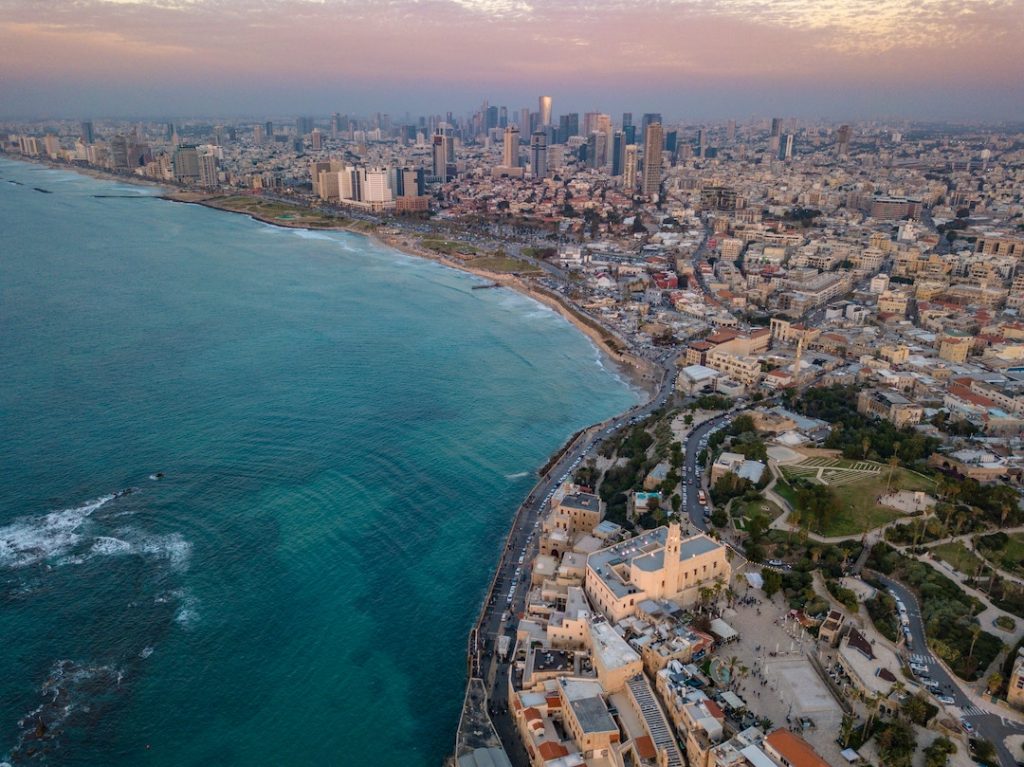
When I say there’s nowhere on earth quite like Jerusalem, it’s not just another overused adage, it’s simply and entirely the truth. The city balances cosmopolitan energy with a kaleidoscope of cultural influence that leaves you feeling like your very own posh Indiana Jones. And whether you find yourself there as part of a pilgrimage, a summer holiday or simply a weekend escape, Jerusalem and its four quarters offer a one-of-a-kind travel experience that you deserve to experience first-hand.
This story was created in partnership with: Israel Ministry of Tourism
And so to prepare you for your visit, here’s the guide I wish I had read before visiting myself.
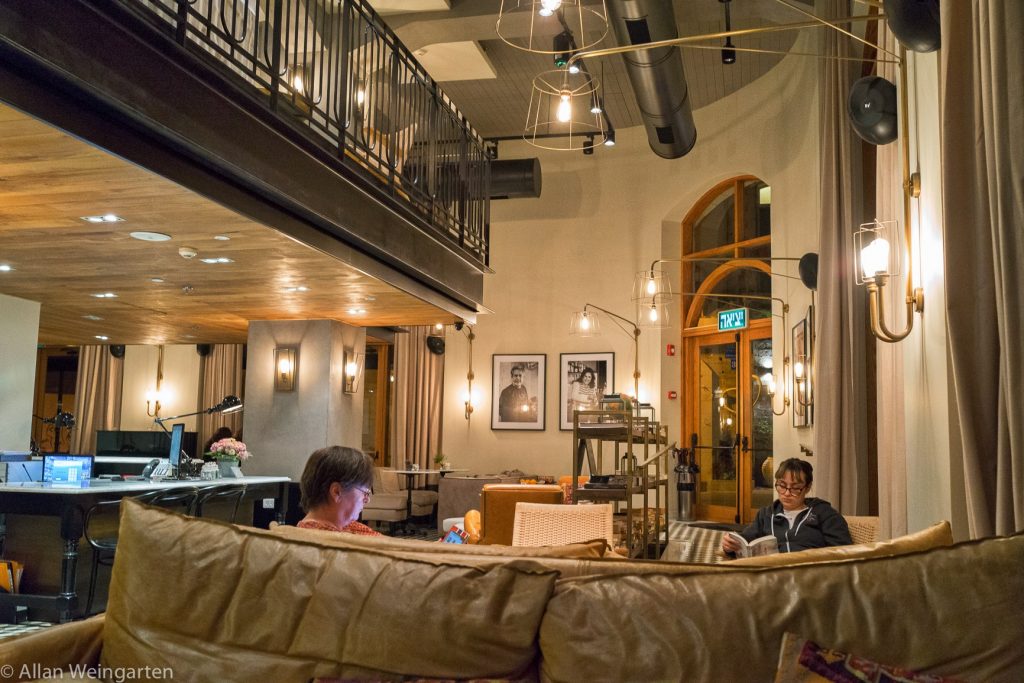
What are the four quarters of the Old City of Jerusalem?
First things first, Jerusalem as a whole is separated into two very different areas: the “modern” city and the Old City, the former of which surrounds the latter. And while there’s plenty of trendy restaurants and noteworthy places to visit in the modern area of the city, the Old City is the star of the show for good reason.
The origin of this much-contested and very ancient city dates all the way back to the 11th century, where the Hebrew Bible first described a heavily fortified city, surrounded by impressive walls – walls that still stand today. Throughout the rest of the city’s history, its governorship has changed hands many times and nowadays the city’s distinct diversity reflects its own complicated past.
The Old City of Jerusalem is currently divided into the following four neighbourhoods, called quarters:
- The Jewish Quarter
- The Muslim Quarter
- The Christian Quarter
- The Armenian Quarter
Here’s a map of the Old City to help make sense of the quarters:
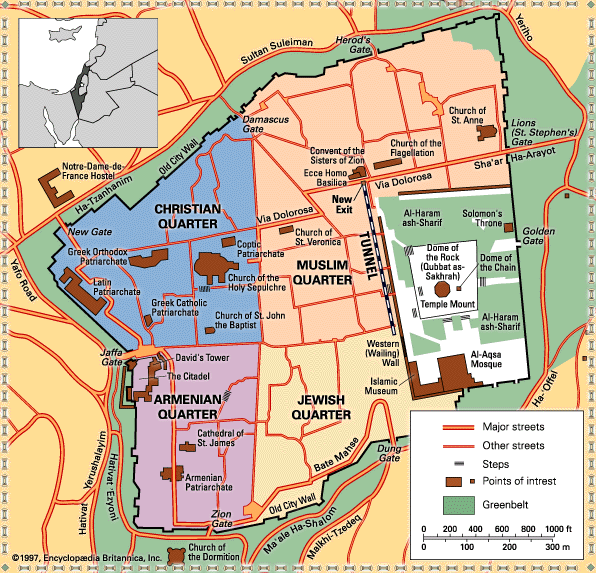
Each quarter boasts its own collection of significant experiences so it’s absolutely essential to explore them all equally. And thanks to the Old City’s small size (less than 1 square kilometre), you can absolutely manage to enjoy most (if not all) of the quarters over the course of a couple of days.
What to do in the Jewish Quarter
Known colloquially to its residents as HaRova, the Jewish Quarter lies in the southeastern section of the walled city and you can reach it from the outside via Dung Gate. Much of the original quarter was destroyed during the 20th century but it would eventually be rebuilt under the supervision of the Israeli archaeologist Nhamn Avigad.
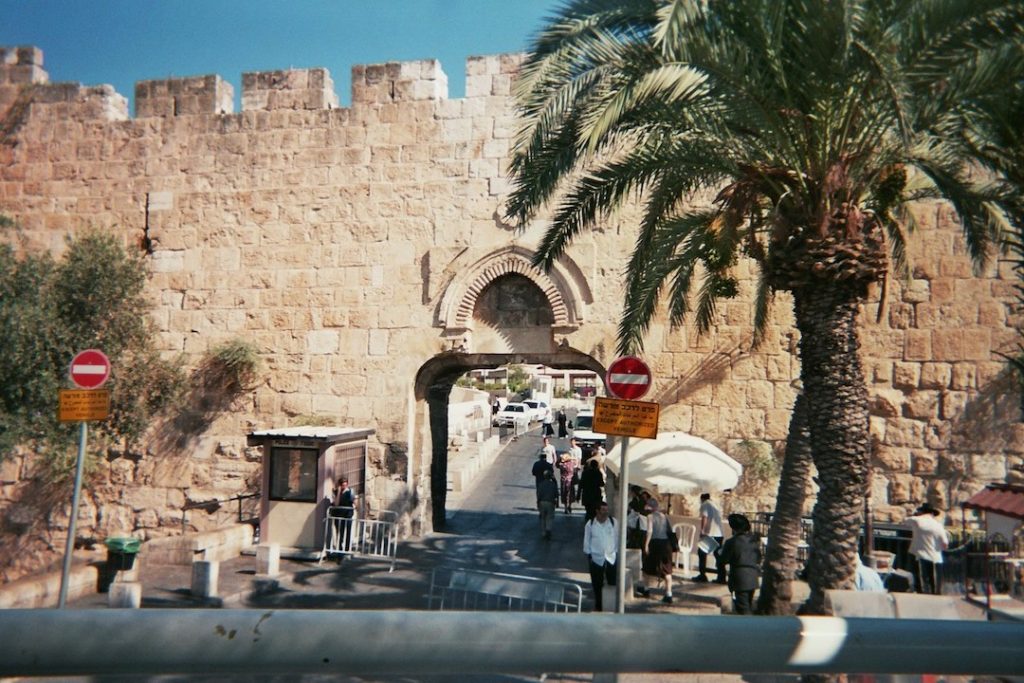
During this period of rebuilding, a few impressive discoveries were unearthed that you can see for yourself today: a 2,200-year-old depiction of the Temple menorah, remnants of the Burnt House (a building destroyed during the Great Jewish Revolt against the Romans from 66-73 CE), the Israelite Tower (dating back to 586 BCE) and most recently a pool built by the Roman Tenth Legion Fretensis.
I’ve seen the pool for myself and can vouch for it as a worthwhile landmark to visit. Still visible are the hundreds of terracotta roof tiles stamped with the name of the old Roman unit whom the structure is believed to have belonged to, as well as the steps leading into the pool and the white mosaic floor. It’s easy to imagine its past glory as a busy bathing spot for ancient Romans.
Make sure you also visit the Hurva Synagogue. First built in 1864, the structure has been destroyed more than once throughout history and was finally reopened in 2010. It’s an important symbol of Jewish heritage and has been depicted in many paintings and literature over the years. You can join a guided tour of the building and learn all about its local history as well as its international significance.
And finally, the Western Wall. Regardless of your relationship with religion, it’s very hard not to get caught up in the atmosphere of this site, also considered the holiest place of prayer in Judaism. Like almost everywhere in…well, Israel, this place is controversial and politically charged but nevertheless exceptionally important to our global history.
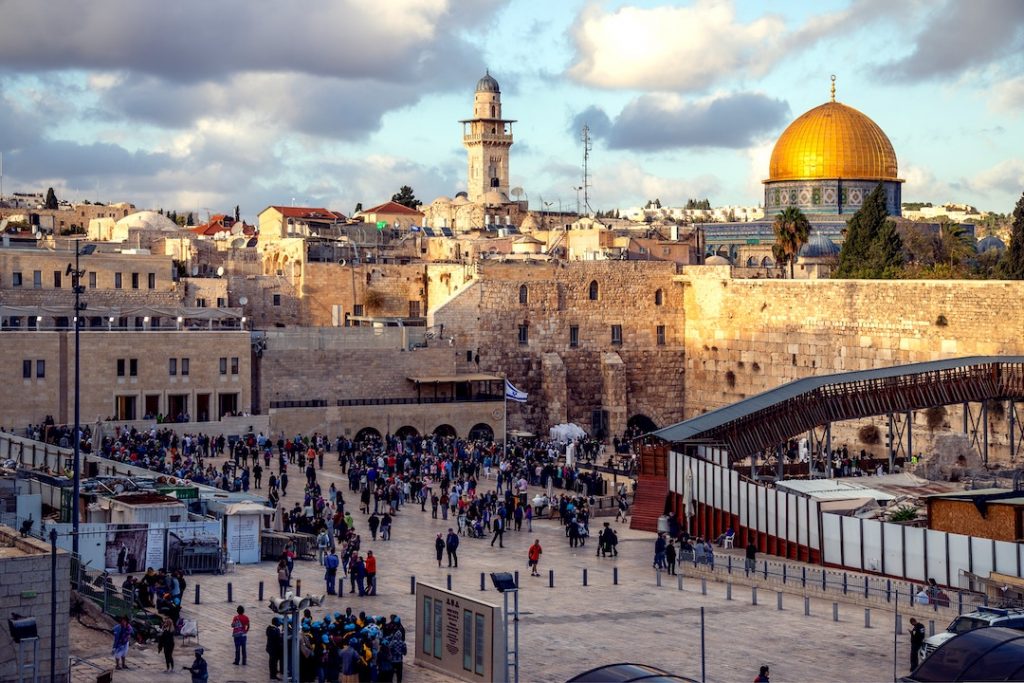
Jews consider the Western Wall to be where God gathered the dust to create Adam and where Abraham almost sacrificed his son Issac to prove his devotion to God.
Muslims believe it’s the place where the Prophet Muhammad ascended to heaven and consider it the third holiest place after Mecca and Medina.
Me, well, I consider it the place where I essentially found what I had been missing throughout all my previous travels: a transformative experience. When I entered into the female side of the wall (genders are segregated here) I immediately understood why the Western Wall is also referred to as “the Wailing Wall”. The intense spectacle the most devout Jews put on as they pray and mourn here is really something to behold.
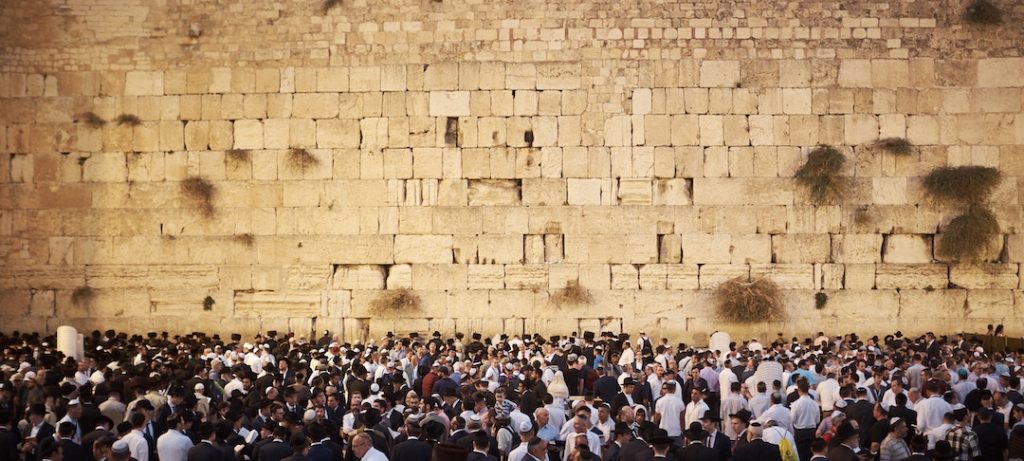
It was so humbling to see hundreds of people, some simply curious like me, most there to be closer to their God, all respecting this ancient symbol in a rainbow of intensity. Before leaving I did what one does when they visit: I made a wish. Using the paper provided, I thoughtfully scribbled a desire for my life and slipped it into a crack inside the stone wall. All the prayers and wishes are collected throughout the year and buried in a Jewish cemetery.
And on your way out of the Jewish Quarter, I suggest using the same thoroughfare used by the Romans: the Cardo. Expertly excavated and restored, this pathway will transport you back in time while also giving you the chance to pick up some handicrafts to commemorate your visit and rest your feet at a quiet cafe.
Annnnnd now onto a new neighbourhood!
What to do in the Muslim Quarter
The Muslim Quarter is actually the largest and most populated of the four neighbourhoods in the Old City. More than 22,000 people call this quarter home and if you’re anything like me, you will find yourself completely entranced by the collision of fragrant fruits, incense, and spices that await you at every turn.
Bring an empty stomach when you walk along streets like Souq Khan Al Zeit and Al Wat; both present equal opportunities for feasting and shopping. Personally, where food is concerned, I recommend sampling the fresh pomegranate juice, creamy hummus and murtabak (essentially a stuffed pancake) from any of the local restaurants. If you’re looking for a quick snack to carry along on your explorations, kunafeh (a soft cheese topped with shredded pastry) should rest high on your list.
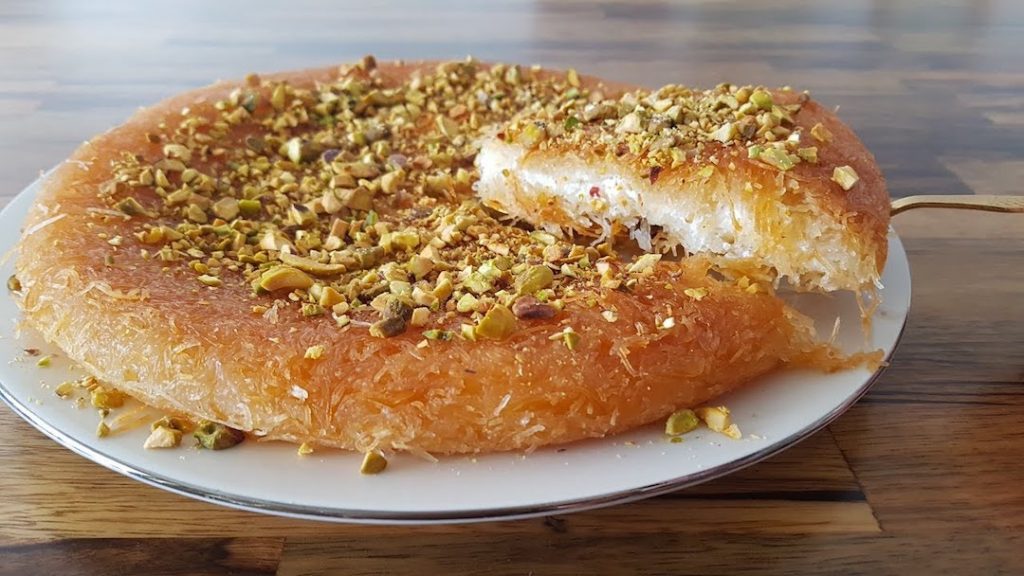
In terms of sites to enjoy, nothing comes close to Temple Mount. If you’ve done any googling you’ve likely seen a photo of this golden topped dome before. I promise it’s even more dazzling in person. As things go, non-muslims are not allowed to enter the actual building (the Dome of the Rock) but the grounds surrounding them are open to everyone and really worth exploring.
Within the area, you can see about 100 different structures built throughout the ages including arches and fountains.
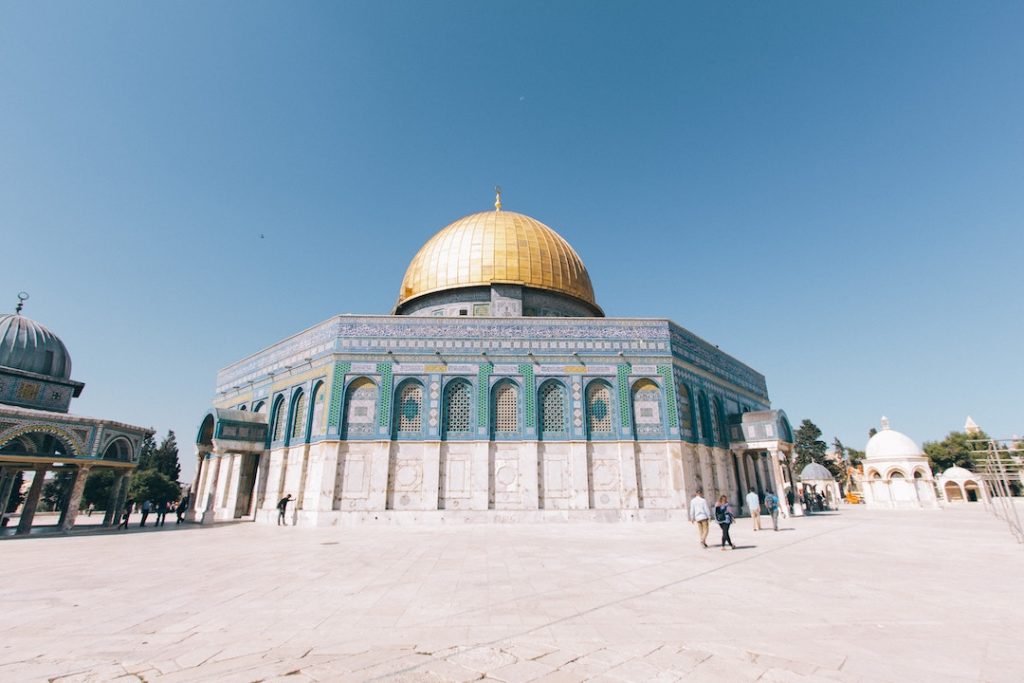
I found this area of the city to be particularly peaceful, so if you’re looking to recharge your batteries, it’s a good place for a quiet stroll. Entry is free but visiting hours are heavily restricted and can be cancelled without notice so sometimes the lines to enter can be long.
When I went I visited in the morning (it was January) and didn’t have to wait at all, so I’d recommend following suit to avoid any disappointment! Just make sure you bring along your passport because you might need to show it at the gate.
Another important place you’d be disappointed to miss inside the Muslim Quarter includes Masjid Al Asqa, a mosque so large it can actually hold up to 400,000 worshipers! It’s located on the southern end of the Temple Mount and, unlike the Dome of the Rock, is open to the public. Make sure you arrive prepared: dress modestly, cover your hair (if you’re a woman) and remove your shoes before going inside. You’ll be stepping foot inside the second oldest mosque in the world.
What to do in the Christian Quarter
Typically the first place you’ll see when you arrive in the Old City (it’s just beyond Jaffa Gate – a common starting point), the Christian Quarter is home to one significant landmark in particular: the Church of the Holy Sepulchre.
Built in the 4th century, this church is considered one of the most significant in Christianity as it’s believed to have been the location of two of the religion’s holiest events: Jesus’s crucifixion and later, his burial and resurrection. For me, it was the highlight of the quarter thanks to its unique architecture and the intensity it inspired in my fellow travellers.
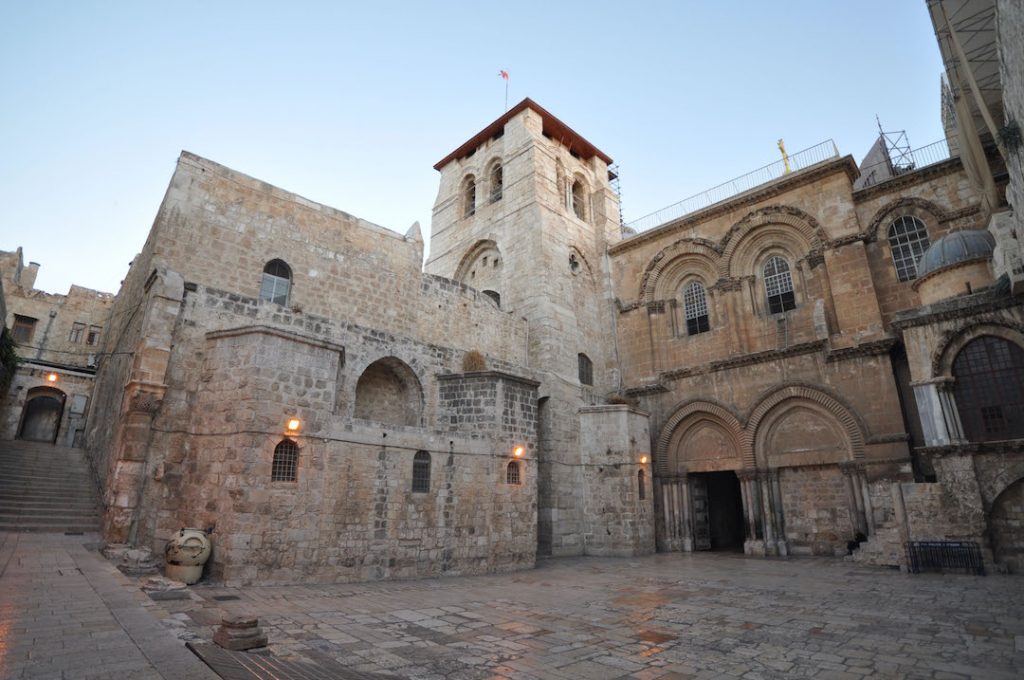
The outside is fairly understated and the church more or less pops out of nowhere when you turn the corner. When you first step inside your eyes will immediately need to adjust to the sombre lighting, and your nose will need to adjust to the strong smell of burning incense. The impact on the senses is immediate and if you’re anything like me, you’ll need to stop to regain your bearings.
It’s a powerful experience to be surrounded by so many people who have made the trip specifically for pilgrimage purposes. The Stone of Unction, where it’s believed Jesus’ body was prepared for its burial, is a particularly important relic and one that was the centre of much excitement during my visit.
Set aside some time to behold the church’s various relics, as it can get quite busy throughout the day and there are many worth checking out beyond the Stone that lies at the entrance.
Beyond the Church of the Holy Sepulchre, there are a few more things you can do in the Christian Quarter that include: the neo-Romanesque Lutheran Church of the Redeemer; the Muristan, a marketplace built over the ruins of a longtime Knights Hospitaller hospital for pilgrims and Jerusalem residents; and the Christian Quarter Shuk, a dizzying array of mostly identical memorabilia and gift stalls that fades imperceptibly into the more functional Muslim Quarter souk.
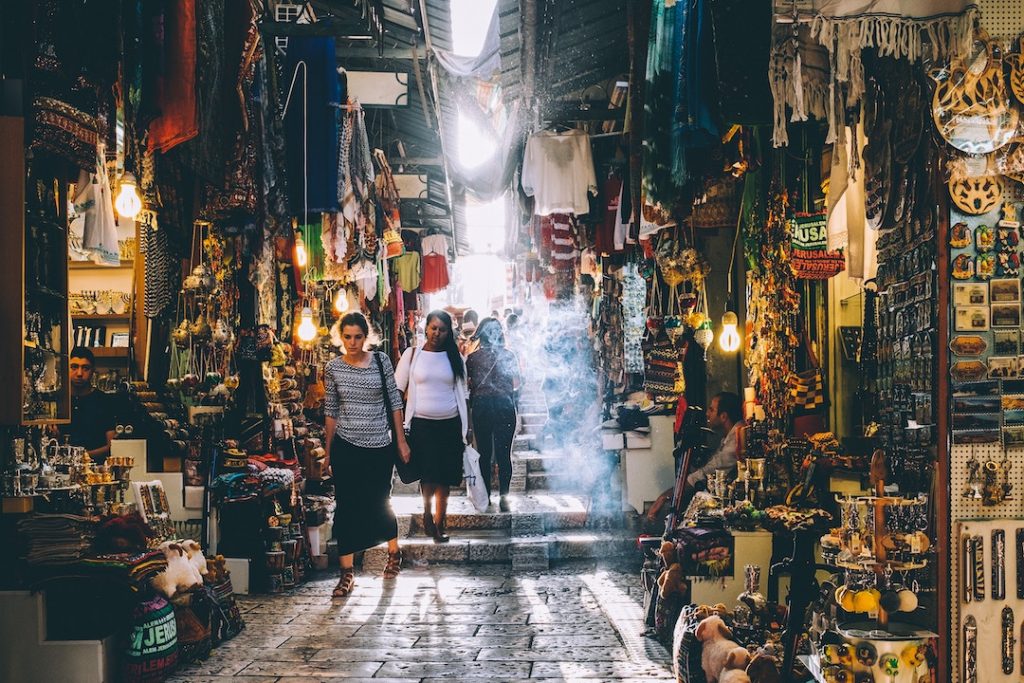
What to do in the Armenian Quarter
The Armenian Quarter is criminally overlooked when it comes to experiences on offer in the Old City. Yes, it’s missing the hype of mega-landmarks like the Western Wall and Temple Mount but as one of the first countries to recognise Christianity as their official religion, Armenia has played an essential role in Jerusalem for a long, long time.
Besides indulging in the charm of the quarter’s winding alleyways, there are three major locations to visit, two of which are churches. First, you have St. Mark’s Chapel, home to one of the city’s smallest and oldest Christian communities and believed to be the true location of the Last Supper.
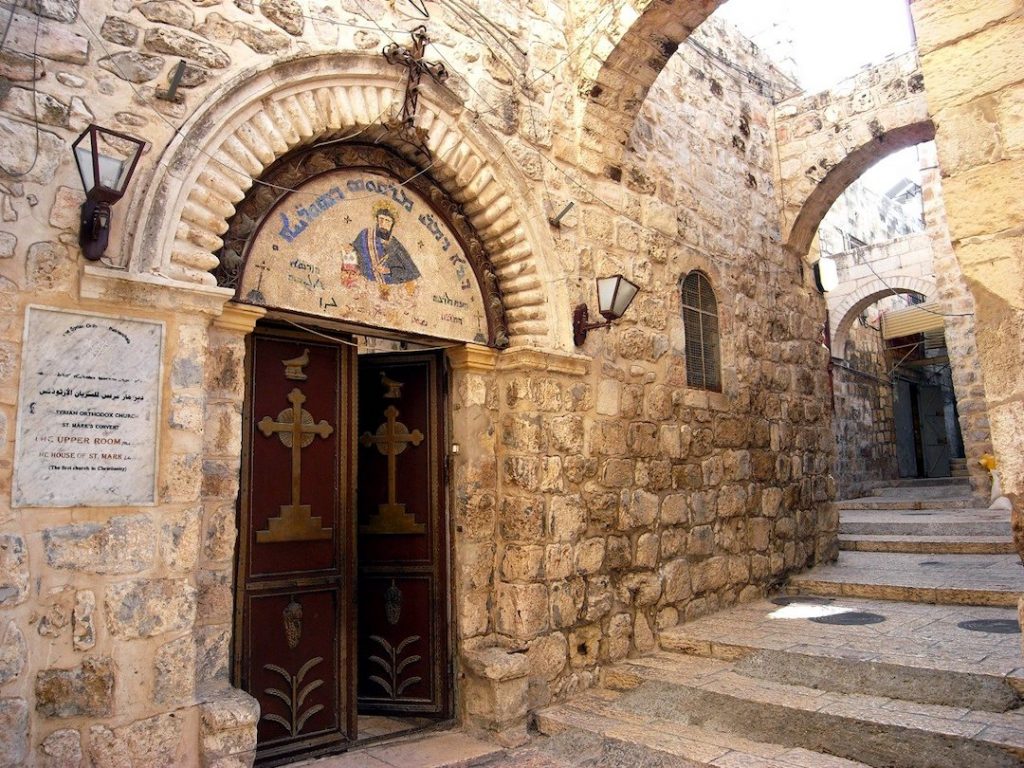
The inside is more impressive than you might anticipate and while the interior of the church is fairly dark, the decoration is nothing short of ornate. The church is also home to what many believe to be one of the oldest depictions of the Virgin Mary.
The other notable church in the quarter is St. James Cathedral. This place of worship dates back to the 12th century and is only open to the public during its daily services so make sure to check again.
And finally, be sure to stop at the Armenian Compound, a multi-use fortress-like building that is a hospice, monastery, and residential area. After the Armenian genocide, this compound welcomed refugees from Turkey and at one point housed more than 1000 people. There’s a museum inside that documents the history of the Armenians, important artwork and also ancient manuscripts.
If you have trouble gaining access (the hours can be a bit odd) join a group tour that coordinates the visit for you or enquire about a private tour at St. James Cathedral.
The only question left is, when will you explore the four quarters of Jerusalem?
I hope you find this guide useful on your own adventure to one of civilizations’ oldest cities. During my time in the Old City, I discovered profound experiences in close proximity of one another and that transformative spiritual moment was not reserved exclusively for the faithful among us.


